TRC Timberworks is now officially a Licensed Residential Builder with BC Housing (formerly Homeowner Protection Office – “HPO”). This means that we can now make it easy for you to build your dream home. On top of the services of…
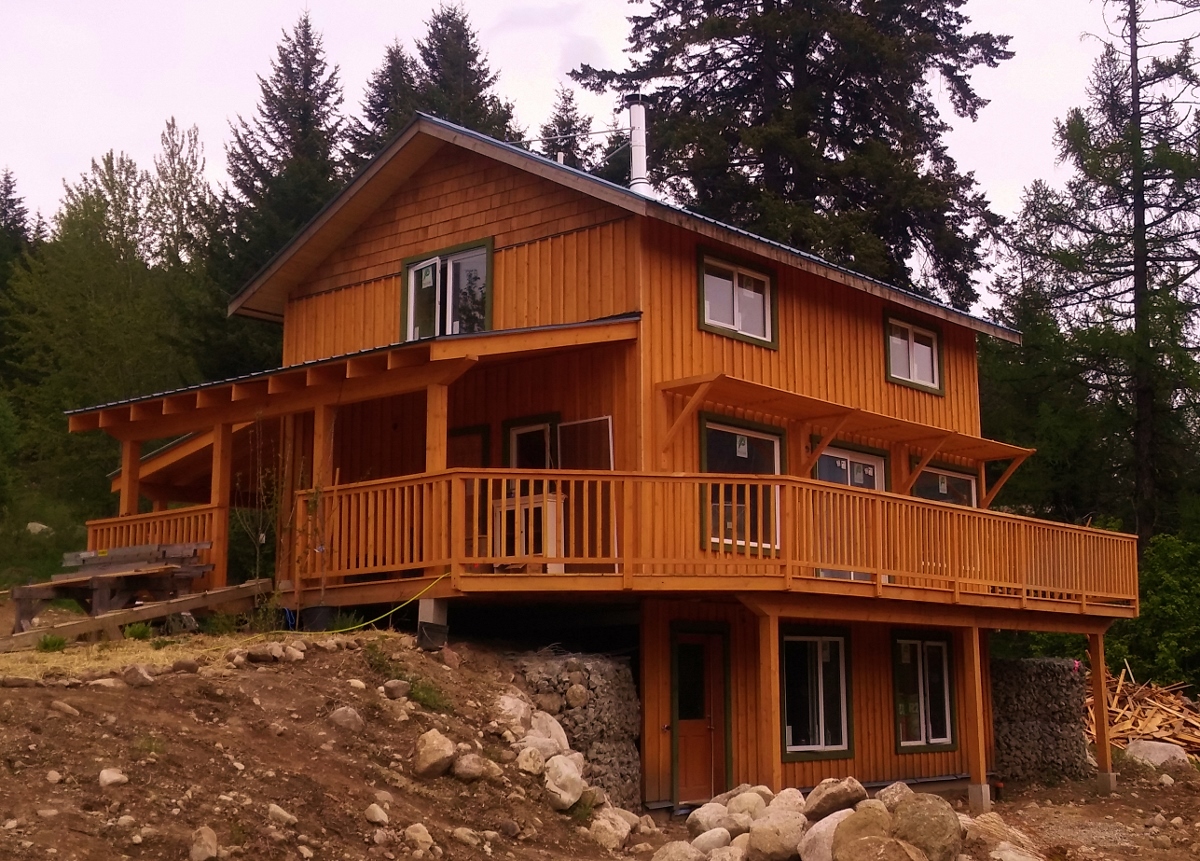

TRC Timberworks is now officially a Licensed Residential Builder with BC Housing (formerly Homeowner Protection Office – “HPO”). This means that we can now make it easy for you to build your dream home. On top of the services of…
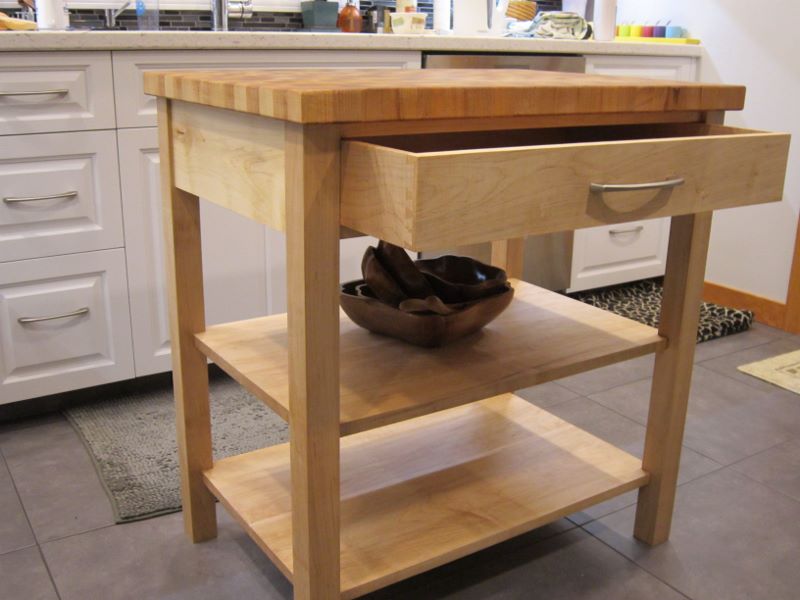
After helping build this client’s kitchen with Juniper Joinery, she wanted an island to add a little more work space. Because the kitchen was too small to accommodate a full-sized island, I came up with this option. The top measures 33″…
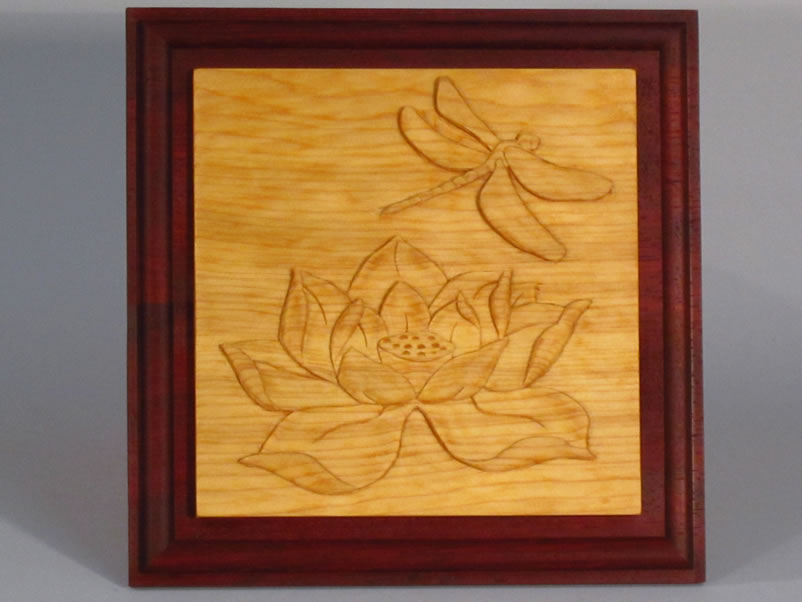
It was my special honour, and one I didn’t take lightly, to craft a memorial urn for a dear friend after her passing. I suggested that a carving on the top of the box would add a personalized touch, and after scrapping several design ideas and one false start on a carving, I came up with this design.
My friend loved dragonflies and lotus flowers, and I wanted to incorporate both. The wood for the carving is cedar, because I liked the colouring of the cedar contrasted with the red colour of the African padauk wood lid.
The urn is finished with natural wood finishes (tung & linseed oils and beeswax), and it is appropriate for an eco-friendly burial of a loved one’s ashes, especially if the loved one was not embalmed or was embalmed with non-toxic chemicals.
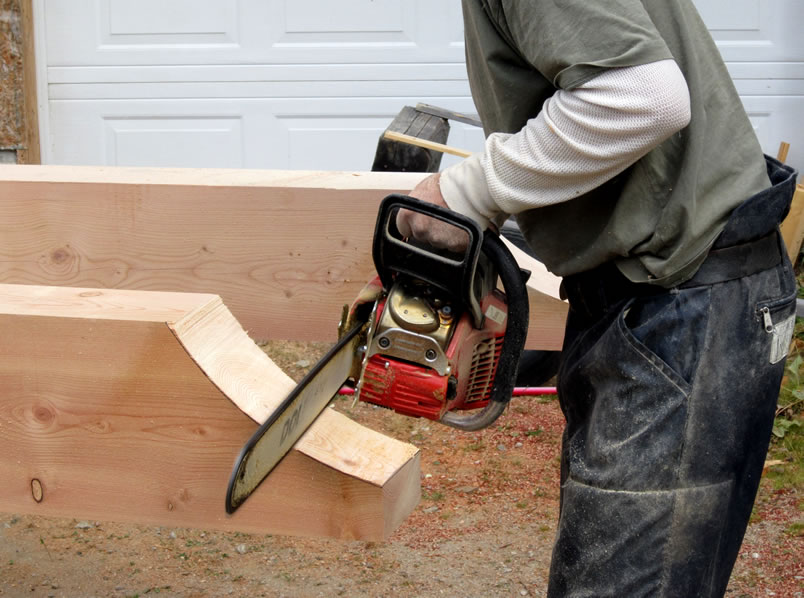
Okay, so it’s not carving, but I did have fun using the chain saw to create the detail work for these beams.
And I have started using an eco-friendly type of small engine gas that cuts down on exhaust emissions by an incredible amount. Running the chain saw now doesn’t stink and create a cloud of fumes. Apparently this gas is standard for small engines in Europe — and I can see why! Time for North America to catch up on this one. Check out: www.aspen.se (Select your country for English language.)
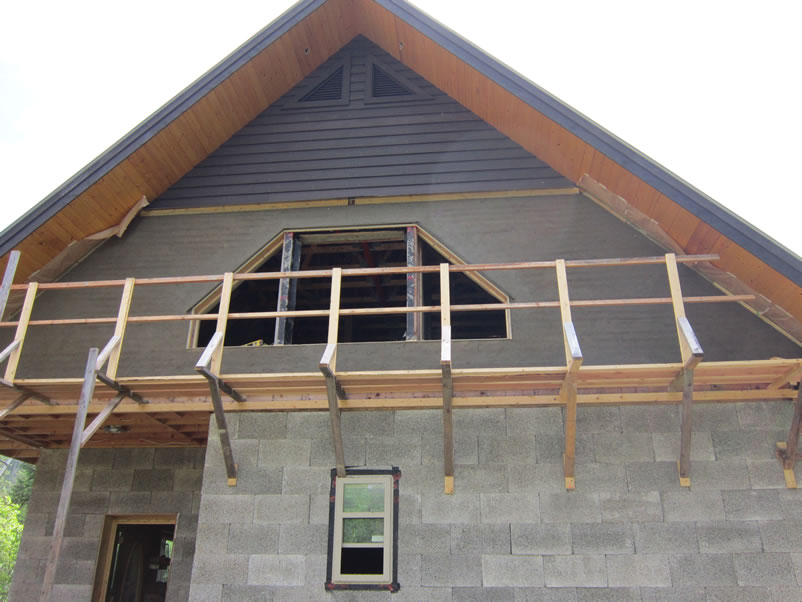
An exterior photo of the body coat of earthen plaster on the woodchip/clay walls, showing the smooth shaping of this coat of plaster on the second storey of the building. The final coat of plaster will be a finish colour coat.
The first storey was built with Durisol blocks. Durisol blocks are a brand of ICF (insulated concrete forms). They are cement bonded wood fibre blocks (similar in shape to cinder blocks), made of ground up post-consumer wood waste, portland cement and a non-compressible rot-proof insulation material such as mineral wool. The blocks are stacked, keeping the insulation part of the blocks to the exterior, and the hollow space that is biased to the interior of the building is filled with concrete to create a stable wall.
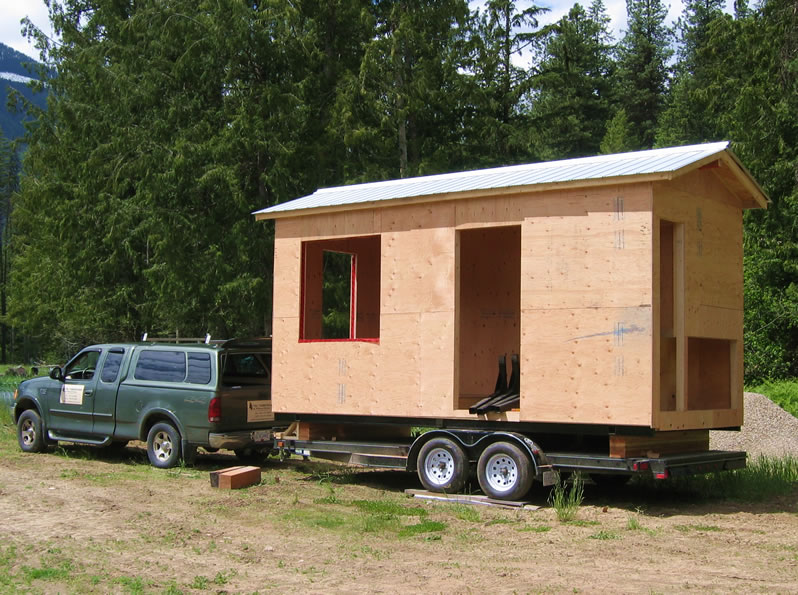
Seeing the frame of this tiny house being pulled by our truck helps put the size in perspective. As people learn more about the true cost to our planet of building, heating, cooling, and cleaning a large house, a tiny house becomes much more attractive!
The owner of this house will be living in 144 square feet with her four legged canine friend. And the lower cost of building and maintaining this house will allow her to significantly reduce her need to work for an income. If we are waiting for retirement to follow our dreams because we need to stick to a 9 to 5 job just to pay the mortgage, is there another way?
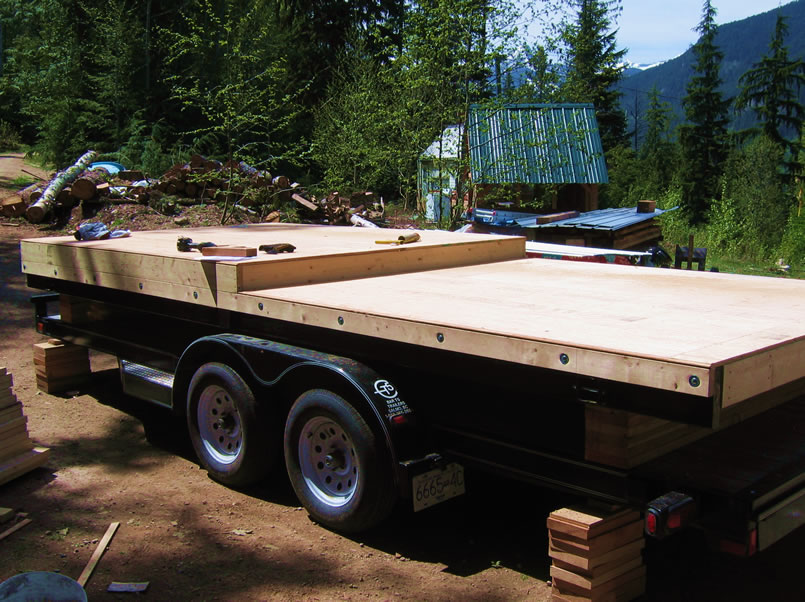
Besides the incredibly low cost for building and heating, this tiny house is easy to move, which is a primary reason why the owner chose this style. This tiny house was custom designed to suit the owner’s needs, and the foundation for the house is a steel frame that was fabricated locally. Jacks fit into each of the four corners, so the frame can be raised and set onto a flat bed trailer for transporting it.
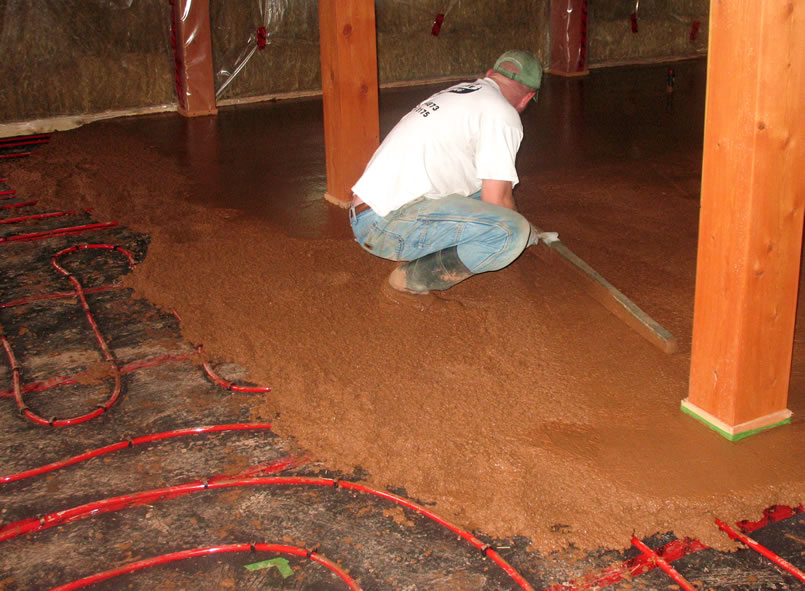
Radiant hydronic floor heat is a heating system that runs hot water through tubing that is embedded in an earthen floor or a poured concrete floor. The heat from a hydronic floor radiates up into the furniture and the feet of the occupants, so the room feels comfortable even at lower operating temperatures. This photo shows a coloured concrete floor being poured.
In the book “Prescriptions For A Healthy House”, Paula Baker-Laporte, Erica Elliott, and John Banta recommend not using copper tubing, as was previously common, because it can conduct electromagnetic fields through the structure if it becomes charged anywhere along its route. Instead they list two types of odorless polyethylene tubing for use with hydronic floor heating systems.
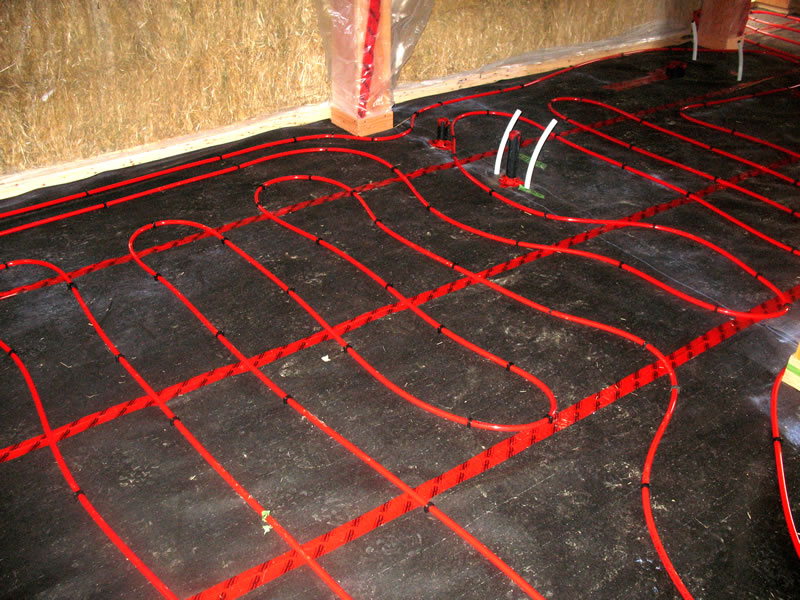
Savings on utility bills and better indoor air quality are just two of the benefits of radiant floor heat systems. The heat from a radiant floor creates warmth that “radiates” into everything it touches – including furniture and your feet – making everything feel warm and cozy.
The radiant heat tubing for this project was laid 9″ apart, which will accommodate several heat source systems, including a heat pump for geo thermal or a boiler (electric or gas). You can also use the water jacket on a wood stove to heat the water in the tubing. The other advantage to having the tubing a little closer together is that there are no pronounced hot or cold spots in the floor.
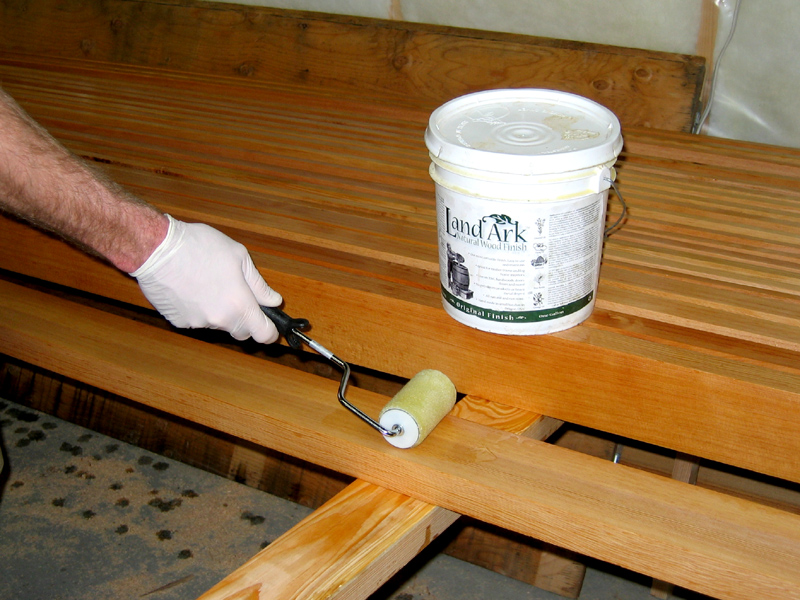
The Land Ark wood finish is a great natural and non-toxic product for interior timbers and trim. It’s important to us to use as many materials and finishes as possible that are healthy for the homeowners and for our team members that are applying the finish. Natural finishes also mean a smaller ecological footprint.